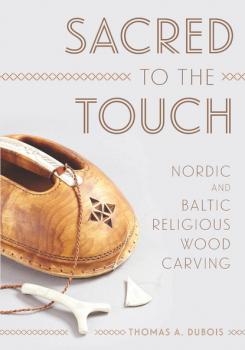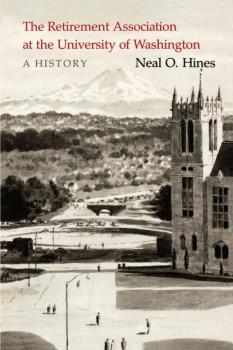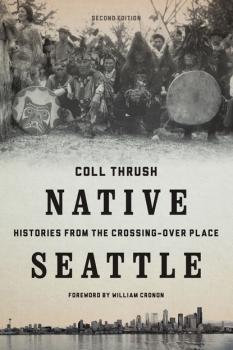Историческая литература
Различные книги в жанре Историческая литератураSacred to the Touch
With near-mythical forests of birch and pine, the Nordic and Baltic countries boast a rich tradition of religious wood carving that is in many ways emblematic of their cultures. Sacred to the Touch examines the spiritual and intellectual projects of six twentieth- and twenty-first-century artists who have adapted and revitalized this tradition. Through interviews and analyses, folklorist Thomas A. DuBois explores the notions of continuity with the past that these artists seek to express through their art, examining the forest church of late Finnish artist Eva Ryyn�nen, the carvings of Norwegian Americans Phillip Odden and Else Bigton that decorate a planned replica of a stave church in Southern California, the medieval Catholic-rooted work of Lutheran Sister Lydia Mariadotter (Swedish), the grave markers and roadside figures of Algimantas Sakalauskas (Lithuanian), and the merging of Lutheran and pre-Christian traditions by Lars Levi Sunna (S�mi). With color photographs and detailed descriptions, Sacred to the Touch reveals the interplay of tradition with personal and communal identity that characterize modern religious carving in Northern Europe.
Many Faces of Mulian
The story of Mulian rescuing his mother�s soul from hell has evolved as a narrative over several centuries in China, especially in the baojuan (precious scrolls) genre. This genre, a prosimetric narrative in vernacular language, first appeared around the fourteenth century and endures as a living tradition. In exploring the evolution of the Mulian story, Rostislav Berezkin illuminates changes in the literary and religious characteristics of the genre. He also examines material from other forms of Chinese literature and from modern performances of baojuan, tracing their transformation from tools of Buddhist proselytizing to sectarian propaganda to folk ritualized storytelling. Ultimately, he reveals the special features of baojuan as a type of performance literature that had its foundations in multiple literary traditions.
The Retirement Association at the University of Washington
The Retirement Association at the University of Washington
Ploughshare Village
This anthropological study of a workers� village in North Taiwan makes an important contribution to the comparative literature on Chinese and Taiwanese social organization. Based on fieldwork conducted in 1973 and 1978, the study is exceptional not only because of its excellent data but also because the village itself was unique. Unlike villages previously studied and written about, Ploughshare was neither an agricultural nor a fishing village, but rather one whose inhabitants earned their living mostly from coal mining, knitting, and other non-agrarian activities. Culture and environmental context thus shaped social organization there differently than in other Taiwanese villages. This ethnography links local data to surrounding socioeconomic spheres: it shows the village�s relationship to its region, to Taiwan as a whole, and to the international economy. It also captures an important point in time, as Taiwan was undergoing the �economic miracle� that brought it into the ranks of developed countries. Stevan Harrell�s new preface highlights changes not only in the village over the last several decades, but also in the ways that anthropologists think about culture and Taiwan.Ploughshare Village, with its rich descriptions and analyses, will be of value to anthropologists, sociologists, economists, and China specialists.
Idle Talk under the Bean Arbor
Written around 1660, the unique Chinese short story collection Idle Talk under the Bean Arbor (Doupeng xianhua), by the author known only as Aina the Layman, uses the seemingly innocuous setting of neighbors swapping yarns on hot summer days under a shady arbor to create a series of stories that embody deep disillusionment with traditional values. The tales, ostensibly told by different narrators, parody heroic legends and explore issues that contributed to the fall of the Ming dynasty a couple of decades before this collection was written, including self-centeredness and social violence. These stories speak to all troubled times, demanding that readers confront the pretense that may lurk behind moralistic stances. Idle Talk under the Bean Arbor presents all twelve stories in English translation along with notes from the original commentator, as well as a helpful introduction and analysis of individual stories.
Symptoms of an Unruly Age
Symptoms of an Unruly Age compares the writings of Li Zhi (1527–1602) and his late-Ming compatriots to texts composed by their European contemporaries, including Montaigne, Shakespeare, and Cervantes. Emphasizing aesthetic patterns that transcend national boundaries, Rivi Handler-Spitz explores these works as culturally distinct responses to similar social and economic tensions affecting early modern cultures on both ends of Eurasia.The paradoxes, ironies, and self-contradictions that pervade these works are symptomatic of the hypocrisy, social posturing, and counterfeiting that afflicted both Chinese and European societies at the turn of the seventeenth century. Symptoms of an Unruly Age shows us that these texts, produced thousands of miles away from one another, each constitute cultural manifestations of early modernity.
Two Centuries of Manchu Women Poets
This anthology presents substantial selections from the work of twenty Manchu women poets of the eighteenth and nineteenth centuries. The poems, inspired by their daily life and reflections, provide fascinating insights into the experiences and emotions of these women, most of whom belonged to the elite families of Manchu society. Each selection is accompanied by biographical material that illuminates the life stories of the poets. The volume’s introduction describes the printing history of the collections from which these poems are drawn, the authors’ practice of poetry writing, ethnic and gender issues, and comparisons with the poetry of women in South China and of male authors of the Qing dynasty (1644–1911).
Reporting for China
While Western media are shrinking their foreign correspondent networks, Chinese media, for the first time in history, are rapidly expanding worldwide. The Chinese government is financing most of this growth, hoping to strengthen its influence and improve its public image. But do these reporters willingly serve formulated agendas or do they follow their own interests? And are they changing Chinese citizens� views of the world?Based on interviews and informal conversations with over seventy current and former correspondents, Reporting for China documents a diverse group of professionals who hold political views from nationalist to liberal, but are constrained in their ability to report on the world by China�s media control, audience tastes, and the declining market for traditional media.
Native Seattle
This updated edition of Native Seattle brings the indigenous story to the present day and puts the movement of recognizing Seattle's Native past into a broader context. Native Seattle focuses on the experiences of local indigenous communities on whose land Seattle grew, accounts of Native migrants to the city and the development of a multi-tribal urban community, as well as the role Native Americans have played in the narrative of Seattle.
How to Read the American West
From deserts to ghost towns, from national forests to California bungalows, many of the features of the western American landscape are well known to residents and travelers alike. But in How to Read the American West, William Wyckoff introduces readers anew to these familiar landscapes. A geographer and an accomplished photographer, Wyckoff offers a fresh perspective on the natural and human history of the American West and encourages readers to discover that history has shaped the places where people live, work, and visit.This innovative field guide includes stories, photographs, maps, and diagrams on a hundred landscape features across the American West. Features are grouped according to type, such as natural landscapes, farms and ranches, places of special cultural identity, and cities and suburbs. Unlike the geographic organization of a traditional guidebook, Wyckoff's field guide draws attention to the connections and the differences between and among places. Emphasizing features that recur from one part of the region to another, the guide takes readers on an exploration of the eleven western states with trips into their natural and cultural character.How to Read the American West is an ideal traveling companion on the main roads and byways in the West, providing unexpected insights into the landscapes you see out your car window. It is also a wonderful source for armchair travelers and people who live in the West who want to learn more about the modern West, how it came to be, and how it may change in the years to come.Showcasing the everyday alongside the exceptional, Wyckoff demonstrates how asking new questions about the landscapes of the West can let us see our surroundings more clearly, helping us make informed and thoughtful decisions about their stewardship in the twenty-first century.Watch the trailer: http://www.youtube.com/watch?v=aYSmp5gZ4-I









